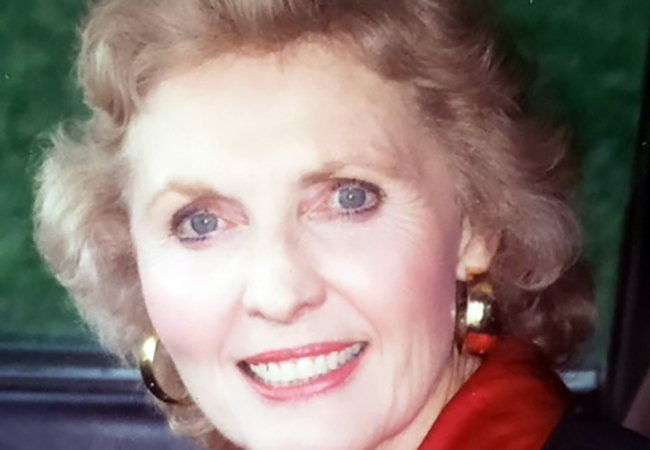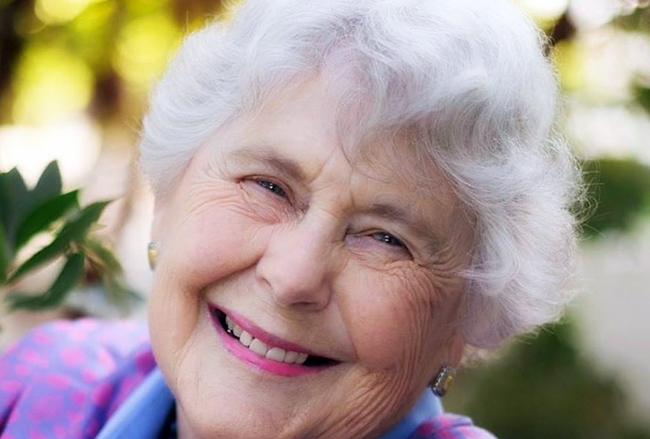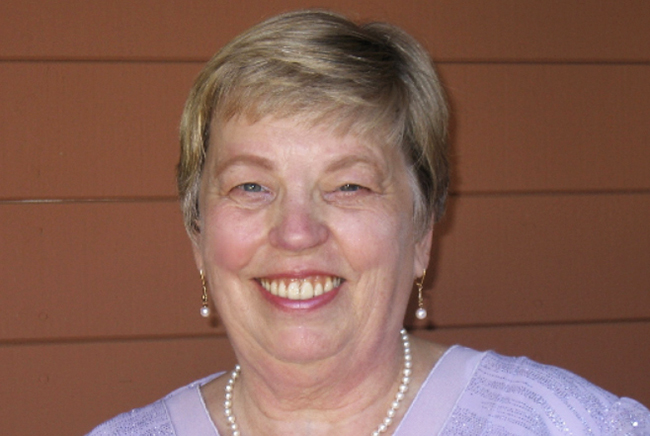Aldo Casanova
Noted sculptor, influential professor, beloved father and grandfather
Aldo Casanova, a renowned sculptor and longtime Claremont resident, died on September 10, 2014. He was 85.
He was born in San Francisco on February 8, 1929 to Italian immigrants Teresa and Felice “Felix” Casanova of Lucca. Felix came halfway across the world with no English and no money and became the head waiter at the Westin St. Francis Hotel. Felix and Aldo shared a great love of working with their hands.
As a child, Aldo was allowed to be a part of his father’s workspace, using the tools there to chisel creations out of Ivory soap and wood. In elementary school, he earned his first public accolade for a model he made of the 1939 San Francisco World’s Fair. He planned to pursue chemistry, but a high school counselor encouraged him to cultivate his artistic talent instead. With his parents’ blessing, he studied art at San Francisco State University, earning a bachelor’s and master’s degree, and went on to earn a PhD at Ohio State University. The elder Mr. Casanova, who never received a formal education, was so proud of his son’s academic achievements that in letters to his son, he always addressed Aldo as Dr. Casanova.
During college, because bronze was so expensive and because there wasn’t a foundry nearby, Aldo confined himself to wood, marble and plaster. Not long after accepting a professorship at Antioch College in Ohio, however, he applied for the Prix-de-Rome, winning the prestigious scholarship, which yielded an all-expenses-paid three-year residency at the American Academy in Rome. This widened his horizons considerably. There was bronze everywhere and three good foundries and so, following the example of fellow Prix-de-Rome winners, Mr. Casanova began working with what would become his primary medium.
“Si vive bene a Roma!” was a phrase Aldo said often, his daughter Anabella recalls, and boy did he. Speaking his native language, exposed to legendary artwork and working side-by-side with the most talented artists in the world, he could not have felt more at home. He was taking flight.
He had this theory about why all of the really great art came out of Italy and Greece,” his daughter Anabella said. “He said that the light in Italy and Greece is so beautiful that a pile of rocks looks like a sculpture. You are compelled to carve it to see what exists inside, what you can pull out of it.”
Mr. Casanova returned to the United States, called back by multiple offers to teach, something he had always loved to do. He finally settled in California where he was offered a position he could not refuse: a tenured professorship at Scripps College, where he stayed for 35 years, beginning in 1966.
“I would have paid to be there!” his daughters recall him joking. “I could not have been happier to be at Scripps.”
“We were encouraged to develop in our fields as an integral part of our commitment to the school,” Mr. Casanova said in a Scripps College article. “I went to the studio in much the same manner as a research scientist went to his lab. I felt anything and everything was possible, and this generated the excitement which continually drew me to my studio.”
Many of Mr. Casanova’s students went on to become prominent artists, including sculptors Arminée Chahbazian, Amy Ellingson, Judith Davies and Elizabeth Turk. Kirk Delman, registrar and collections manager for Scripps’ Ruth Chandler Williamson Gallery, is one of the many artists who, as a studet at Claremont Graduate School, benefited from Dr. Casanova’s mentorship.
“I love the way he handled the material. I loved how he interpreted natural form into his own personal kind of vocabulary,” Mr. Delman said. “He was a product of his time but not unaware of where art was moving. He was happy to talk to you on all subjects—on the sculpture you were doing, works you had seen at exhibitions, books you were reading, music you were listening to. He was well-versed in art history, and in the use of many materials, which proved very helpful for many of us who were not necessarily carving stone or casting bronze, but using other things.”
Mr. Casanova, who retired from Scripps in 1999, was elected to the National Academy of Design in 1992. In 1994, he was ushered in as a fellow of the National Sculpture Society.
A 2003 Williamson Gallery exhibit, “Aldo Casanova: A Retrospective,” highlighted 44 sculptures—animals, people, abstracts—which represent a small portion of the sculptor’s body of work. A Scripps College bulletin quoted Mr. Casanova as aspiring to be “the Johnny Appleseed of sculpture, leaving bronzes instead of trees.”
He succeeded.
His work is everywhere from UCLA’s Franklin D. Murphy Sculpture Garden, alongside Henry Moore and August Rodin, to the Whitney Museum in New York City. Locally, the Claremont Museum of Art is the proud owner of an abstract sculpture called “Torso I” (1963); a mushroom and another large-scale bronze abstract called “Genesis” reside at the Rancho Santa Ana Botanic Garden. “Juncture,” a 1965 bronze piece that is simultaneously organic and columnar in appearance, rests on the Scripps College campus. Another local treasure, Mr. Casanova’s emblem series of the 1970s, can be seen on the facade of the WM Keck Science Center of the Claremont Colleges.
Of Aldo’s work shown at the Huntington Library, Jessica Smith, curator of the American Galleries, said, “The sculpture has a wonderful sense of dynamism, of movement, and a great robust energy about it that really makes it hold its space in the gallery. And Mr. Casanova was so lively. What a bright, ebullient spirit!”
His enthusiasm and sense of humor was celebrated by friends, colleagues and family alike. In 1975, he adopted two beautiful girls from Seoul, South Korea, Aviva and Liana, with his first wife Joan.
Aviva recalls him as the life of the party. “As an orphan from Korea, I had no frame of reference for what ‘funny’ was, but my dad instilled a sense of humor in me, for which I will be eternally grateful,” she said. “He was always telling jokes and charming everyone around him. I remember thinking if he hadn’t been an artist he could have been a comedian.”
Scripps College professor emeritus, COURIER cartoonist and Aldo’s longtime friend Paul Darrow said, “Aldo was fun to be around.” He remembers most fondly the sculptor’s “loud, high laugh.”
His daughter Anabella also recalls the laughter. “Whenever I was lost at a party or gallery show, I could always stop and listen. My father’s laugh was so loud and resounding, I could always triangulate where he was from his laughter.”
Mr. Casanova was 55 when he and his second wife Judy welcomed Anabella.
“I’m so grateful to him for all the amazing things he exposed me to,” said Anabella, an actress and filmmaker. “He showed me Marlon Brando, Cary Grant, Abbot and Costello, Charlie Chaplin, Fred Astaire. And jazz: he gave me a great appreciation for music.”
Mr. Casanova spent the last nearly 20 years with retired educator Jill Fulton. The pair met when they were introduced by mutual friends and soon became companions. Life was never dull with Aldo, according to Ms. Fulton.
“He was a music expert on many levels. He loved classical jazz and we had season tickets to the Philharmonic,” she said. “He played guitar and the ukulele. Aldo was one of those Renaissance men. He could do everything. He was very handy. He could build anything.”
He was not only a joy but an inspiration to many. He encouraged his students and colleagues, but maybe most importantly he inspired his family. Having admired his son’s talent and success, his father Felix took up painting in his retirement, showing a real talent and an excellent sense of color.
Aldo’s 5-year-old granddaughter Annalise has also recently discovered her own artistic talent. In Aviva’s last conversation with her father, she told him that her daughter has begun introducing herself as “Annalise, the artist.” He can have no better legacy than that.
Mr. Casanova is survived by three daughters, Anabella, Aviva and Liana Casanova, his son-in-law, Orlando Aguilar, and granddaughter, Annalise. He also is survived by Jill Fulton, his longtime companion in Claremont, her daughter and son-in-law, Elizabeth and Corey Schmidt of Glendale, and their three children, Evan, Claire and Sam.
A Requiem Mass for Mr. Casanova will be held at 11 a.m. on Saturday, October 18 at St. Paul’s Episcopal Church, 242 E. Alvarado St., Pomona.
A Celebration of Life will be held at 4 p.m. on Sunday, October 19 in Bixby Court at Scripps College.









0 Comments